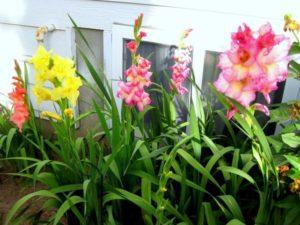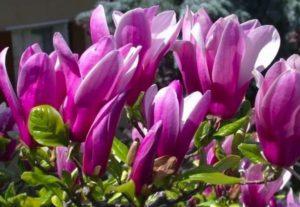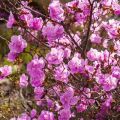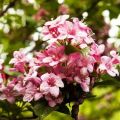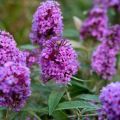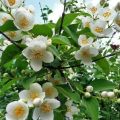Description of species and varieties of ovoid forsythia, planting and care rules
Forsythia is an ornamental shrub of low growth. Gardeners appreciate it for its abundant early flowering, as a result of which the branches are covered with golden buds. The most winter-hardy species is ovoid forsythia. The shrub is widespread in warm regions - on the Korean Peninsula, the Balkans. In temperate climates, it is successfully cultivated, enduring even frosty winters.
Description of forsythia
The shrub grows in height from 1 m to 3 m, in width - up to 2 m. Its stems are thin, straight, have a drooping appearance. The bark is gray, rough, thin-pointed dark green oval leaves with marginal teeth. The length of closely spaced leaf plates is from 2 to 15 cm. The flowering of the shrub begins in March-May. The buds appear on the shoots of the last year. After blooming, they have the shape of golden bells with long petals. Ripe winged seeds fly out of the pods.
Unlike ovoid forsythia, variegated foliage has more decorative foliage, rather than flowers. It changes its hue from greenish to golden throughout the season.
Types and varieties
There are several varieties and types of forsythia, differing in the appearance of flowers and leaves, winter hardiness, timing and duration of flowering, and other characteristics.
European forsythia
The shrub is the most widespread in Europe, winter-hardy, height - up to 2 meters. Erect branches cover the 7 cm long leaves with smooth edges. Yellow flowers that appear in May are collected in groups of several pieces and look like bells.

Forsythia drooping
A powerful shrub has a height of up to 3 m. Growing area - north of China. In Europe, it is able to take root in the southern regions - in the Crimea, in the Caucasus. The foliage is very decorative - its color changes from dark green in spring to purple in autumn. Tubular flowers are collected in bunches and have a noticeable orange stripe inside, their length is about 3 cm.
The most popular varieties of drooping forsythia are Purpurenostebelnaya, Zimbolda, Motley, Forchuna.
Intermediate forsion
The garden shrub is undersized. Its branches are straight at first, later, under the weight of flowers, bend to the ground. Oval-lanceolate leaf plates with denticles along the edges.
Flowering begins in April and lasts about 3 weeks.The inflorescences consist of several buds that form around the leaf buds. The most popular varieties of intermediate forsythia are Lindwood, Wonderful, Dense, Fiesta.
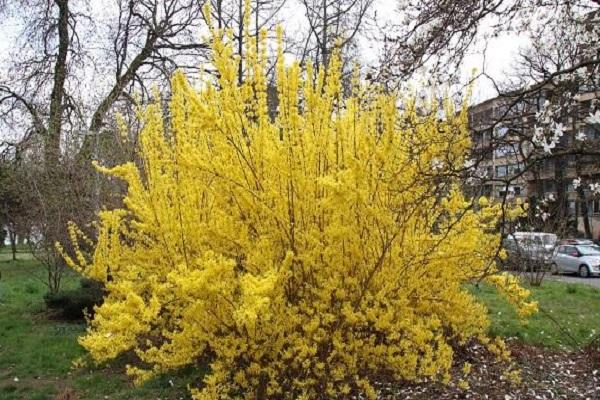
Forsythia ovoid
The natural habitat of ovoid forsythia is Korea. Today, the species is widespread in central Russia, since it belongs to one of the most winter-hardy. Its flowering occurs earlier than other plants and lasts 2-2.5 weeks.
The form of an ornamental shrub is spreading, its diameter reaches 2 m. Leaves appear after flowering. They are long, bright green, with sharp ends, wide in diameter. The most famous varieties of ovoid forsythia are Weekend Sapphire, Parkdecor, Goldsauber.
Forsythia dark green
The plant has elastic branches 3 m long, arranged vertically, their bark is green. Emerald-colored lanceolate leaves are often located along the entire length of the shoots. They are distinguished by a smooth and glossy surface.
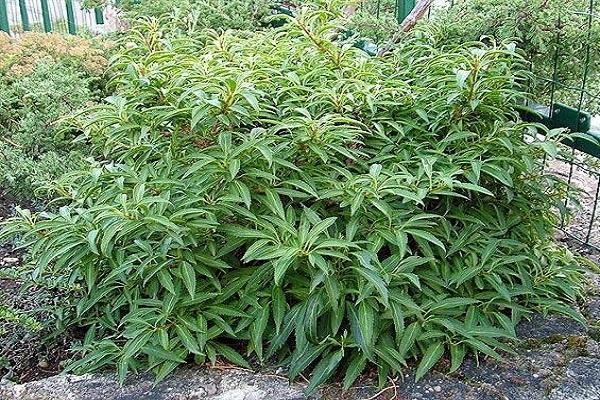
The dark green forsythia begins to bloom with buds in small groups. After opening, their color turns out to be green-yellow.
The foliage of the shrub is so dense that it is used for hedges. Planting in the Moscow region is not recommended, since the shrub is thermophilic, and there is a high probability of freezing in severe winters.
Snow forsythia
Abeliophyllum, or snow forsythia, is on the verge of extinction. The species is unique, since the only one has not yellow, but white flowers with a pinkish tinge, collected in a brush. The flowering period is characterized by an abundance of fragrant buds.
The height of the ornamental shrub is 2 m. The leaves are dark green, oval, pubescent. Their color changes to purple in summer.
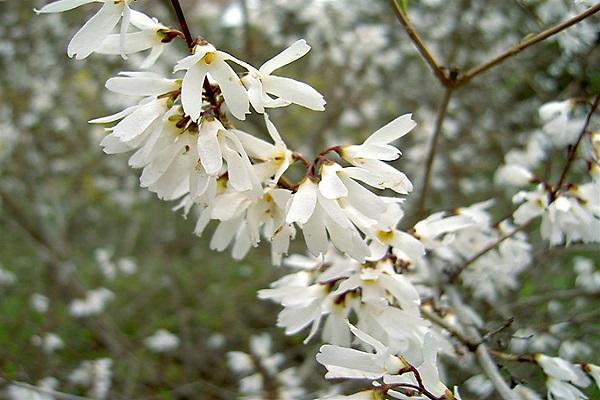
Forsythia Giralda
China is considered the birthplace of Giralda's forsythia. Its appearance resembles European. The leaves are in the form of oblong ellipses with sharp ends, green above, pale below. Small golden flowers completely cover the shoots of the shrub.
Advantages and disadvantages
The advantages of ovoid forsythia include:
- good survival rate after transplantation;
- unpretentious care;
- resistance to major diseases and pests;
- easy portability of pruning.
Among the disadvantages of the shrub:
- short flowering period;
- the need for shelter for the winter due to the weak frost resistance of the plant;
- a new plant needs several years to bloom.
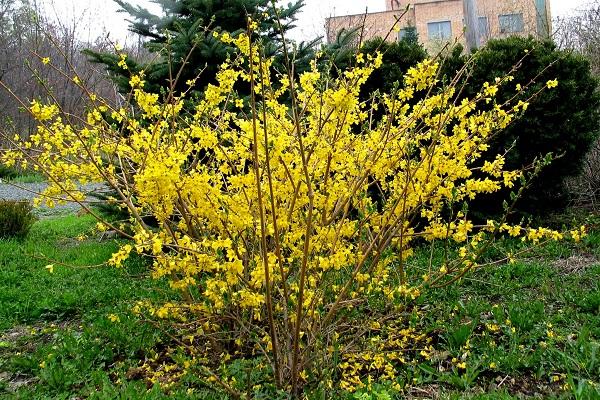
Features of growing a shrub
Today ovate forsythia is grown in parks and squares, gardens of private houses. The reason for its popularity was its early flowering, undemandingness to growing conditions and care.
When and where to plant
Planting oviferous forsythia is carried out in spring or autumn before the onset of frost, so that the plants have time to take root and do not die in winter.
An area protected from northern winds is suitable for landing. Forsythia easily tolerates shading, but grows better in a sunny area. An ornamental shrub prefers alkaline soil without stagnant water. Wood ash is added to the acidic soil during digging.
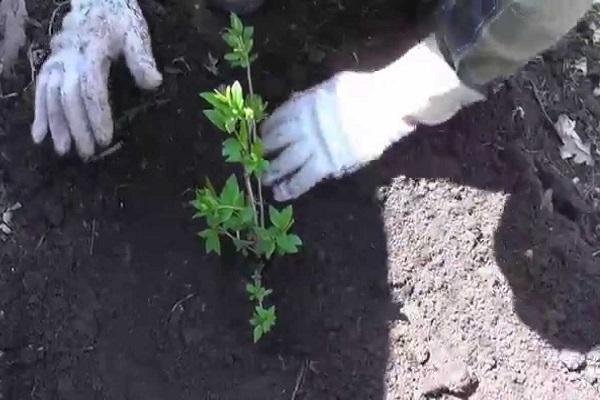
Preparation of planting material
Seedlings obtained as a result of cuttings are ready for planting only after the formation of the root system.
The acquired planting material for oviparous forsythia should be carefully examined. Plants must be intact, roots strong and developed. The age of the planted plant is no more than 2 years. Before planting, dry shoots are cut off the seedling, the root system is soaked for several hours in a growth stimulator solution.
Landing technology
To plant ovoid forsythia, follow the algorithm:
- prepare pits 50 cm x 50 cm x 60 cm;
- maintain a distance between adjacent plants of 150 cm;
- make a drainage layer 15 cm thick;
- pour 10 cm of sand on the drain;
- put a soil mixture of peat, compost and sand on top in a ratio of 1: 2: 1;
- plant a seedling in the center of the pit;
- fill the voids with soil;
- tamp;
- water abundantly.
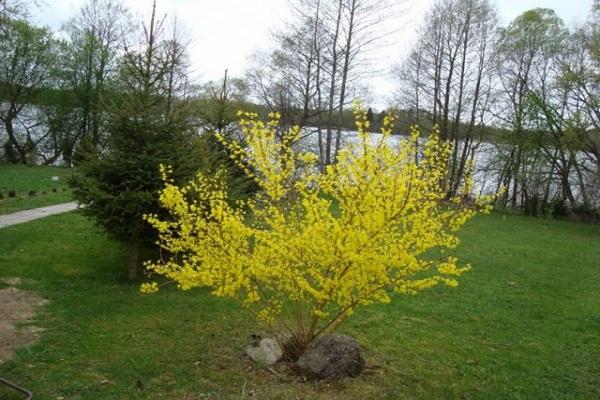
Plant Care Tips
When caring for a shrub, a number of measures are necessary:
- timely watering;
- sanitary pruning;
- plant feeding;
- loosening and mulching the soil.
How to fertilize correctly
Feeding forsythia ovoid is carried out three times per season:
- in early spring - completely rotted manure;
- in the middle of spring - complex mineral fertilizers (65 g per 1 sq. m);
- at the end of flowering - a universal fertilizer (100 g per 1 sq. m).
After fertilization, the plant is watered abundantly.
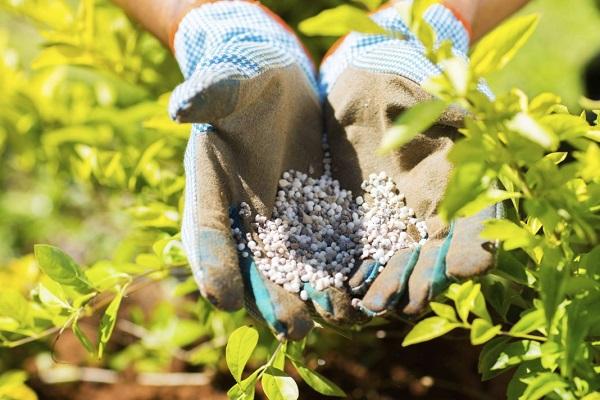
Watering rules
Watering oviferous forsythia is carried out in the same way as other shrubs. With regular precipitation, they refrain from artificial sprinkling. During a drought, watered three times a month, using 10 liters of water for one plant at a time.
After watering, the soil is loosened, freed from weeds and mulched with peat, compost, dry foliage.
Transfer
To transplant an adult oviparous forsythia plant, it is worth waiting for autumn, carefully digging a bush and planting it in a prepared hole according to all the rules. With the arrival of frost, the plant is reliably covered with foliage, spruce branches, and non-woven material.
Pruning
Due to timely pruning, oviparous forsythia develops proportionally, looks decorative, blooms profusely. The first haircut is carried out no earlier than the third year of the plant's life. In the spring, the ends of the frozen shoots are cut off. In the summer, at the end of flowering, all branches are shortened and the extra ones that thicken the bush are cut out.
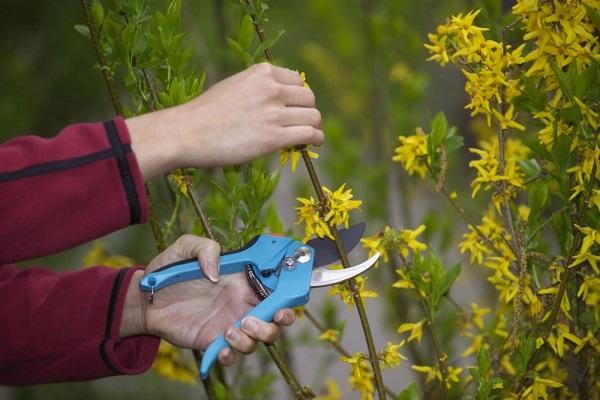
Every three years the shrub is cut at the base or 2/3 of the length. The plant is rejuvenated, its growth is activated.
Wintering
Forsythia ovoid refers to winter-hardy species, but when planting or transplanting a young plant in the fall, it is worth reliably sheltering it from the upcoming cold weather. To do this, the trunk circle is covered with mulch, the branches are neatly bent and insulated from above with spruce branches. Later, the plants are covered with snow. In early spring, the shelter is removed, and the mulch is removed from the trunk in order to prevent the bark from podoprevaniya.
Features of care after flowering
As soon as the forsythia has faded, a number of activities are carried out:
- cut branches growing inside the bush;
- remove young growth from the roots;
- top dressing is applied in the form of Kemira fertilizer.
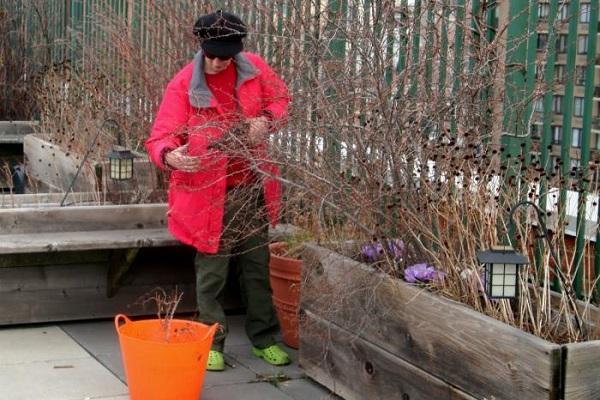
Diseases and pests
Forsythia ovoid is resistant to diseases and pests, but with excessive watering and improper care, damage to diseases is possible:
- wilting - spraying with the systemic drug "Vectra" is used for treatment;
- bacteriosis - dig up a bush and dispose of;
- moniliosis - all sore spots are excised.
The defeat of the plant by a nematode leads to root rot.
Spraying with "Carbation" disinfects the soil and destroys the nematode.
Reproduction methods
Forsythia ovoid can be propagated in several ways:
- seed;
- using cuttings;
- layering.
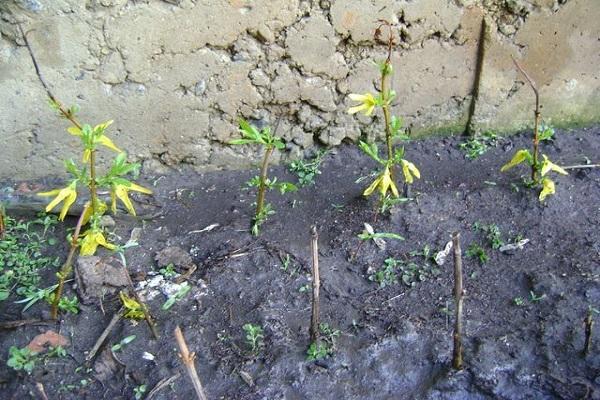
Seeds
The method is used if it is necessary to grow a large number of seedlings. To do this, perform a number of actions:
- Ripe seeds are harvested in October.
- They are stratified within 2 months at a temperature of +5 ⁰С.
- In March, they are sown in boxes under glass.
- A year later, they are planted in open ground for growing.
- In the third year, the seedlings are transferred to a permanent place.
Layers
The method is one of the easiest to obtain a new plant. To this end, at any time (in spring, summer or autumn), a groove is dug near the mother bush, the most flexible shoot is tilted and covered with earth. First, foliage is removed from it and small cuts are made for better rooting. The shoot is pinned to damp ground with a dry branch or wire. After a year, the finished seedling is separated from the mother plant and transplanted. Forsythia obtained from cuttings blooms after a year.
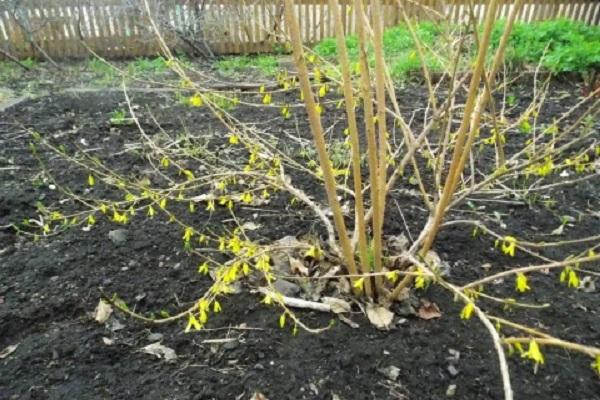
Cuttings
Reproduction using green cuttings involves the use of one-year-old shoots, which are harvested after the forsythia blooms. They are cut 20 cm long from lignified branches. Without removing the leaves, the cuttings are planted in moist soil at an angle, deepening no more than 5 cm. The cuttings are covered with a film from above and the microclimate in the shelter is maintained for a month, after which the roots appear. Plants are transferred to a permanent place and grown throughout the year.
Use in landscape design
The shrub is highly decorative, therefore ovate forsythia is used in gardens as individual plantings and in group compositions.
Beautiful, dense foliage allows you to make hedges from plants, as they tolerate pruning well.
In early spring, the bushes look especially bright against the background of conifers, especially since during this period other shrubs are not yet blooming.
